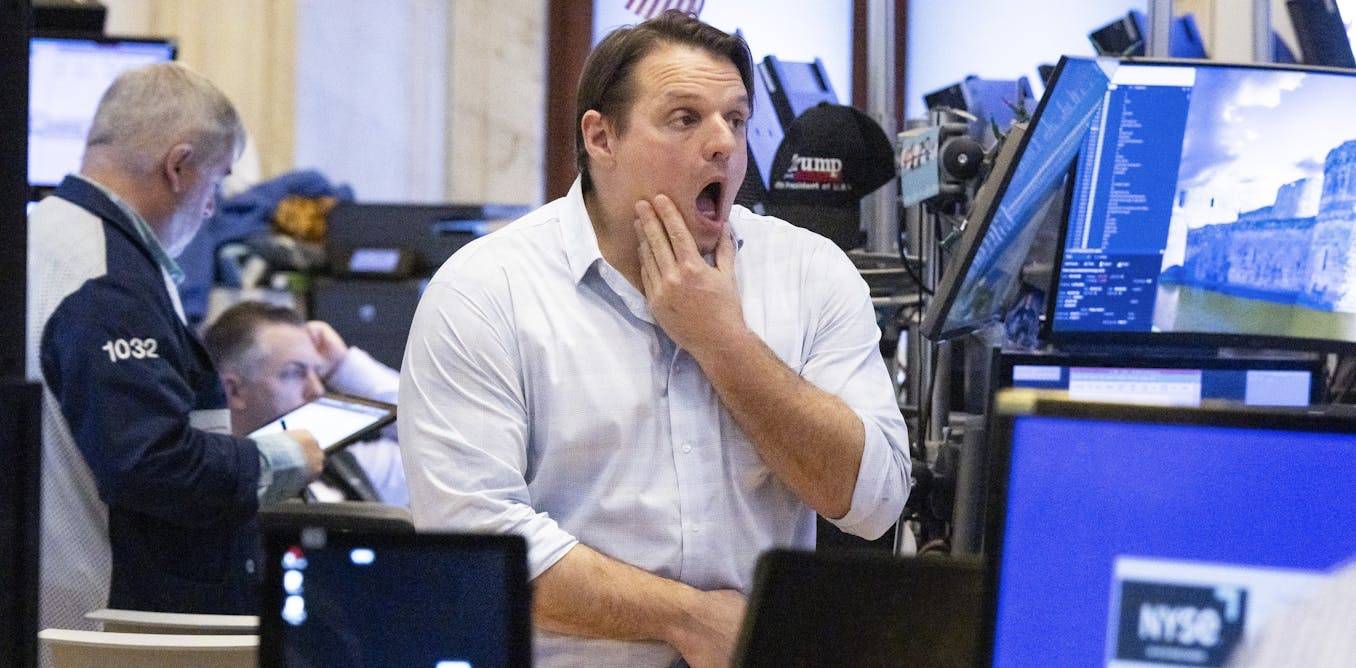Current Market Turbulence
Financial markets are having a rough time lately. The Dow Jones had its worst day since 2022, dropping over 1,000 points on August 5. Bitcoin fell below $50,000, and tech stocks took a beating too. When markets go wild like this, our first instinct might be to panic and sell everything. But history shows that’s usually the wrong move.
Why Markets Crash
Market drops happen for many reasons. Sometimes it’s because economic numbers don’t look good. Other times, investors get scared about what might happen in the future. Recently, fears about a possible recession in the U.S. have made markets nervous. When Japan raised interest rates for the first time in years, it added more fuel to the fire.
These market fears can spread like a virus. When prices start falling, more people get worried and sell their investments, pushing prices even lower. Before you know it, everyone’s talking about a “market crash” and wondering if they should get out before things get worse.
Lessons From Market History
But taking a deep breath during these scary moments can save your financial future. Research from Fidelity Investments shows that investors who stayed put during the 2008 financial crisis ended up much better off than those who sold in panic. By 2023, those who held steady saw their accounts grow by an average of 326%.
“The biggest mistake investors make is letting emotions drive their decisions,” says financial advisor Sarah Johnson. “Selling when markets are down locks in your losses instead of giving your investments a chance to recover.”
History gives us good reasons to stay calm. Every major market drop has eventually been followed by a recovery. The COVID crash of March 2020 seemed catastrophic at the moment, but markets bounced back to new highs within months. Even the brutal 2008 financial crisis, which took longer to recover from, eventually gave way to one of the longest bull markets in history.
Opportunities in a Downturn
Instead of panicking when markets fall, smart investors often see it as a chance to buy more at lower prices. Think of it like finding your favorite items on sale. Warren Buffett, one of the world’s most successful investors, famously said we should “be fearful when others are greedy, and greedy when others are fearful.”
Of course, staying invested during downturns only makes sense if you have a solid plan to begin with. This means having different types of investments spread across various areas (called diversification). If you own only tech stocks, for example, you’ll feel a lot more pain when that sector struggles compared to someone who owns a mix of investments.
The Importance of Time Horizon
Your time horizon also matters a lot. If you’re young and saving for retirement decades away, short-term market drops shouldn’t worry you much. But if you need your money soon for a house down payment or retirement next year, you might need a more conservative approach.
“Most people should have an emergency fund covering 3-6 months of expenses before investing heavily in stocks,” explains financial educator Michael Chen. “This gives you financial breathing room during uncertain times without having to sell investments at the worst possible moment.”
Know Your Risk Tolerance
Market volatility also gives us a chance to check our risk tolerance. If you can’t sleep at night when markets drop 5%, you might need to adjust your investment mix. There’s no perfect investment strategy that works for everyone – the best approach is one you can stick with through good and bad times.
For those feeling the urge to take action during market turbulence, there are better options than selling everything. You might rebalance your portfolio, buying more of what’s dropped in price to maintain your target investment mix. Or use the opportunity to tax-loss harvest, which means selling investments at a loss to offset gains elsewhere and reduce your tax bill.
Stay Focused Through the Noise
Remember that financial news headlines are designed to grab attention, often using scary language that makes market movements seem more dramatic than they really are. A “market bloodbath” or “brutal selloff” makes for exciting news, but these terms don’t help us make good financial decisions.
The key to successful long-term investing isn’t about having a crystal ball to predict market moves. It’s about having a solid plan you can stick with during both sunny and stormy market weather. By staying calm when others panic, you give your investments the best chance to grow over time.
As market volatility continues, keep your financial goals in focus rather than getting caught up in day-to-day price swings. The investors who weather these storms successfully aren’t necessarily the smartest or luckiest – they’re the ones who keep their emotions in check and stick to their long-term plans.








